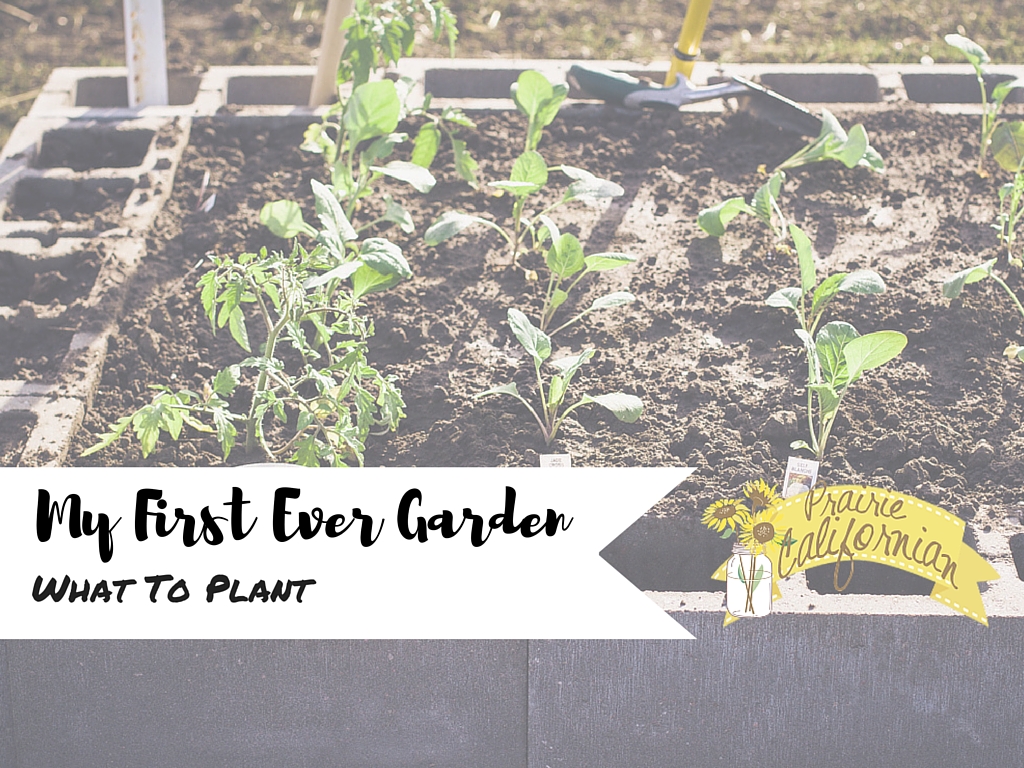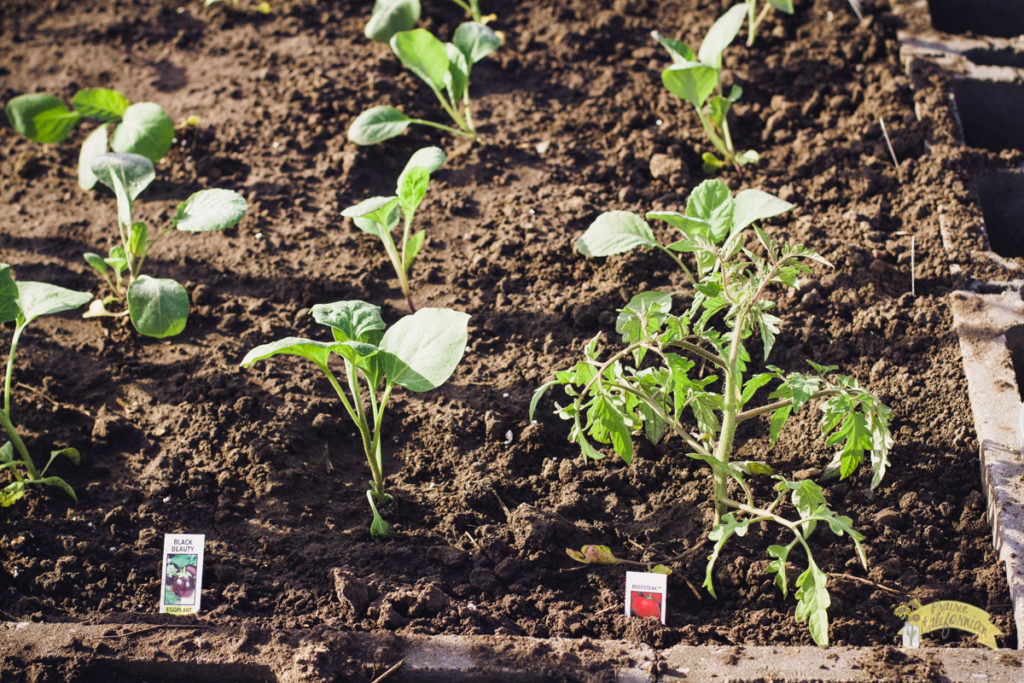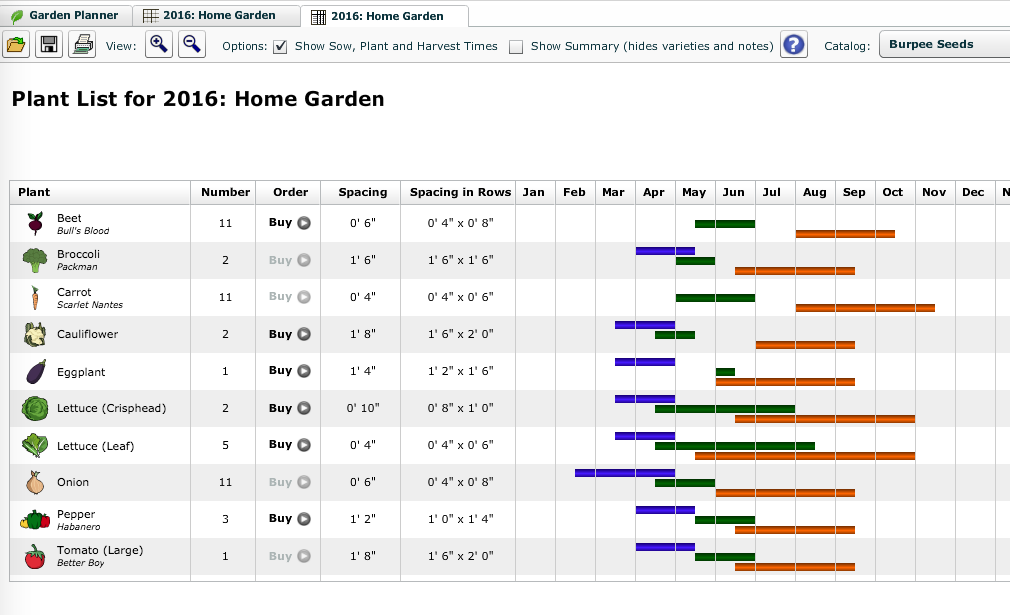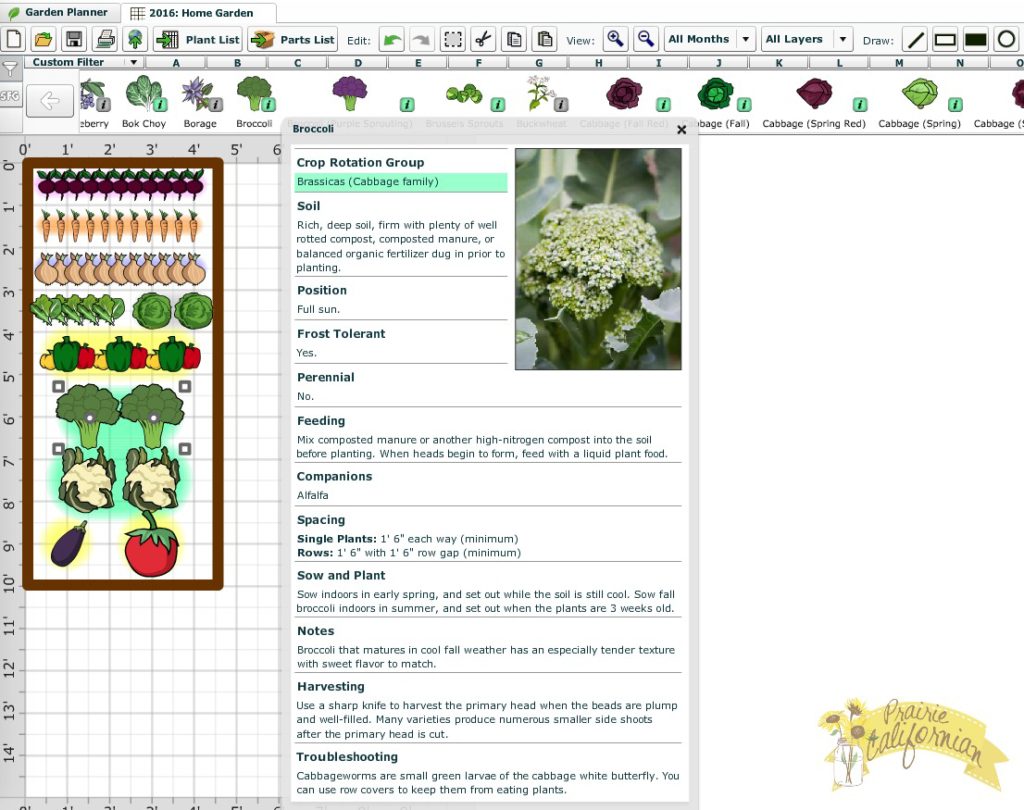
Last week I introduced my first ever garden project, I decided to make a cinder block raised bed garden in our yard. It was fairly simple to construct and fairly inexpensive. Planning the construction of the garden was the easy part… But picking what to plant in the garden was the difficult part.
There are so many awesome veggies out there and so much technical information on each one. Researching what to plant, what does well in my Zone, etc. was overwhelming. Trying to wade through all the information and all the suggestions wasn’t any easy process. Luckily, I found a couple amazing websites that proved to be the perfect resource to simplify the process.
Plant What You’re Going to Eat
This seems like a no-brainer, but it is so tempting to plant things just because they are easy to grow or do well or popular in a garden. I made a list with two columns to start, yes and maybe. I based my list on the things we eat pretty regularly. And I also took into consideration the things we get an abundance of from friends and family. For example, my mother-in-law grows an amazing and huge garden as does a good friend of my husband’s. We usually have a pretty regular supply of cucumbers, zucchini, green beans, potatoes, and tomatoes. So those things weren’t included on my “to-grow” list. And if I were going to duplicate them, I would make sure I grew a different kind or variety of the crop. Needless to say, I like variety.
Plant What Does Well in Your Zone
Now that I had a list of possible crops to grow in my garden, I searched out some documents from our extension service. Most university extensions have great resources for gardening (among many other things). I found this document containing the best varieties of vegetable crops for North Dakota gardens. Basically they’ve done the work for you, the list of varieties have performed well in research conducted in gardens and research stations in North Dakota and other states in the Midwest. They even include a list of seed company resources to purchase seed.
Plant According to Your Growing Calendar
Our NDSU extension service also publishes a great deal of information on planting dates, doing a quick google search I found this vegetable planting chart which included information like inches between plants and rows, when to plant, days until edible, and even yield per 10 ft. row.
Another great resource I found is the Farmer’s Almanac Garden Planting Calendar, shown above. You can input your zip code and based on your last average frost date, it gives you a plant indoors, plant outdoors, and harvest calendar for a variety of popular vegetable crops. It was so nice to have all of this information in a handy dandy little visual chart for my growing area.
Plant What Will Fit In Your Garden
This part of the equation seemed like one of the most intimidating aspects. Fortunately, the Farmer’s Almanac came through with this too! I found this awesome garden planner which is free for a trial period ($29.00 annual subscription). This powerful tool combines a garden graphing software with the planting calendar based on your location as well as gives you a TON of useful information on the various vegetable crops all in one place.
I found this tool to be extremely helpful as a first time gardener. It had all the information I needed in ONE place. It also helped make my garden spacing much more simple, I could click and drag the vegetables I wanted to plant into my digital raised bed and then drag them out based on how much space I had. The garden planner will also calculate how many plants you’ll need if you’re buying seedlings to plant.
I have included a screenshot of the program for those who are curious. It is pretty awesome and totally took the intimidating factor out of planning the garden for me, which is a HUGE win!
Direct Sow or Purchase Seedlings
As I’ve learned, a huge part of successful gardening is plain and simple planning. If you are wanting to start your own seeds, it takes planning to time them to be planted in the garden after your last average frost. Some seeds also take quite a bit of time to germinate and get established as seedlings so extra time may be alloted for those varieties.
Because this is TOTALLY new to me, I looked up what seeds are best direct sow and what seeds are hard to start from seed and purchased seedlings for those. I used this resource from About.com to help me decide which seeds from my list I wanted to direct sow and which seeds from my list I wanted to purchase seedlings at a nursery. My garden ended up being about half seedlings and half direct sow seeds.
I also ended up trying to start a couple varieties of seeds indoors that I will eventually re-plant in my garden, more about this next week. For information on starting seeds, I found this AMAZING Youtube Channel where he discussed in depth all things about starting plants from seed, hardening seedlings off, and replanting them in a garden. I have spent way too much time watching this guy this past weekend.
I am excited to report that some of the seeds I started have already sprouted! Let’s hope their growth continues! Next week, I will share what I planted in my garden and an update on how everything is doing!
What are your favorite garden planning resources? Do you plan your garden or just make all the decisions at one time!?
Disclosure: Some materials and vegetable seed in this series has been provided by Monsanto. However, the content and opinions expressed are that of Prairie Californian.




Looks great. I have a small back yard and tried one plant of oregano from OSH and one sweet basil. The snails got the basil but the oregano is going strong. Love having fresh herbs!